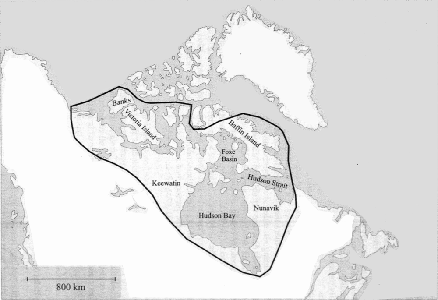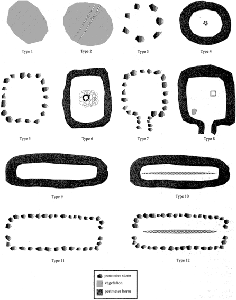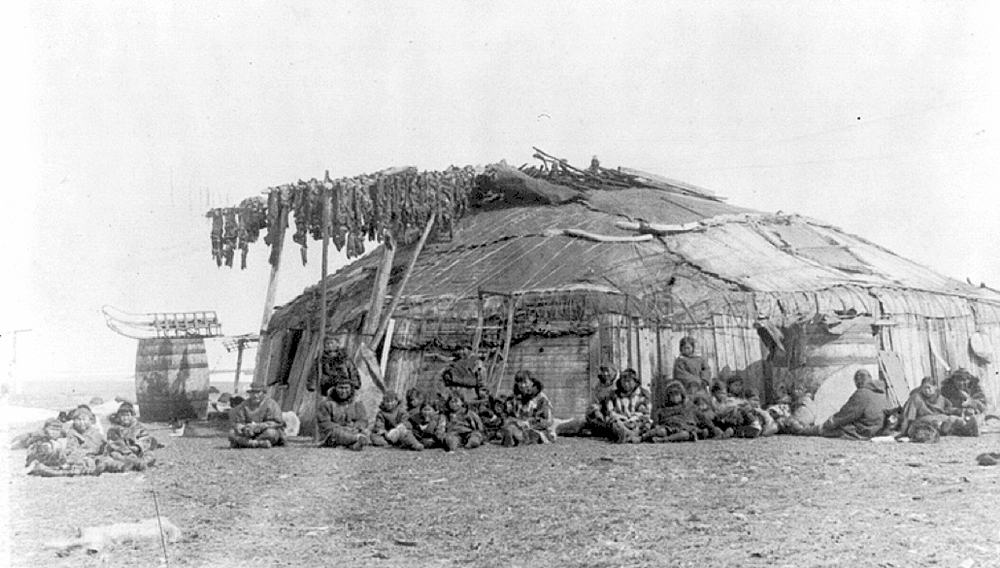
Norton or Dorset Paleo-Eskimo semi-subterranean house


Above left: map of Norton/Dorset tribal territory around Hudson Bay and Low Arctic (Karen Ryan); Above right: plans of Norton/Dorset houses (Karen Ryan).
Paleo-Eskimo culture (separate from Thule) of the Central Canadian Low Arctic, from 800 BCE from and Early, Middle, Late, and Terminal Dorset Culture (2500-500 B.P.); developed from Pre-Dorset and Sarqaq (indigenous rather than a new migration of people), 800 BC to AD 1000; land and sea mammals used; used stone lamps, kayak, hand sled. According to Smith (1991) Dorset did not use dogs, umiak, bow and arrow, whale gear.
Elevation is at sea level.
Materials: built of a combination of cut sod, stone, and whalebone, insulated with sea mammal or reindeer skins and animal fats and covered with a bank of snow.
Source:
1. Savelle, James M. and Dyke, Arthur S., 2014; PALEOESKIMO OCCUPATION HISTORY OF FOXE BASIN, ARCTIC CANADA: IMPLICATIONS FOR THE CORE AREA MODEL AND DORSET ORIGINS; American Antiquity
Vol. 79, No. 2 (April 2014), pp. 249-276.
2. Ryan, Karen, 2005; An overview of Palaeoeskimo architectural remains in the Central Canadian Low Arctic; Études/Inuit/Studies. Volume 27, Issue 1–2, 2003, p. 29–65
